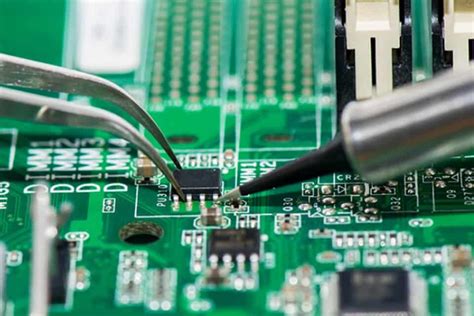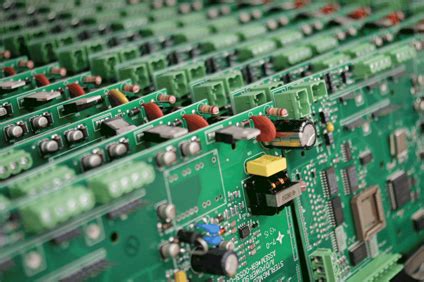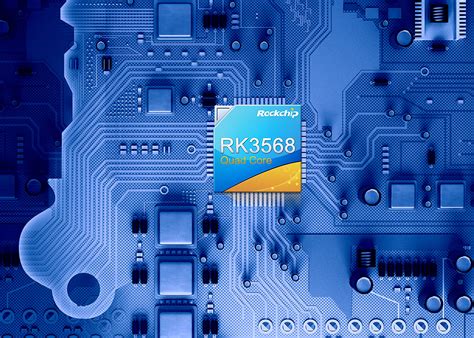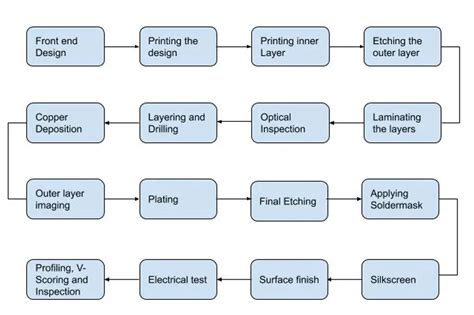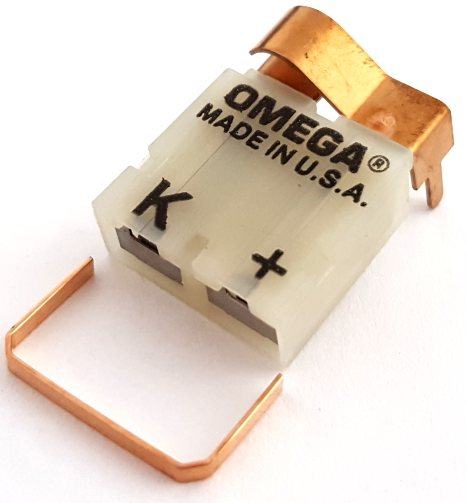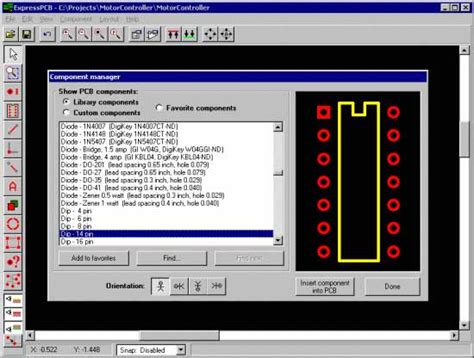Innovative Techniques in Prototype Electronics Assembly

Key Takeaways
In the rapidly evolving field of prototype electronics assembly, understanding the essential components of pcb assembly and PCBA methodologies is crucial for achieving high performance and efficiency. The exploration of advanced techniques in this domain reveals that a combination of innovative approaches and state-of-the-art materials can significantly enhance the assembly process. For instance, utilizing adhesives and solder technologies that cater to specific application needs can improve reliability while reducing costs.
Moreover, the integration of automated assembly systems plays a pivotal role in minimizing human error and maximizing precision during assembly operations. The consistent use of robust testing protocols throughout the process ensures that each prototype meets quality standards before moving to production.
| Technique | Benefits |
|---|---|
| Surface Mount Technology | Increased density, smaller footprint |
| 3D Printing | Rapid prototyping, design flexibility |
| Laser Cutting | Precision, reduced waste |
“Investing in advanced tools and techniques today pays dividends tomorrow through improved productivity and quality.”
In summary, leveraging these innovative resources positions organizations competitively in developing electronic prototypes tailored for diverse applications while setting a foundation for ongoing improvements in their pcb assembly processes.

Introduction to Prototype Electronics Assembly
In the realm of prototype electronics assembly, understanding the foundational processes is essential for achieving optimal results. The method of pcb assembly serves as a critical starting point in this journey, where the integration of various electronic components onto a printed circuit board (PCB) is performed with precision and care. These techniques, often referred to as pcba, encompass a wide range of practices that ensure electronic prototypes are not only functional but also reliable. By employing advanced strategies such as surface mount technology (SMT) and through-hole technology, engineers can maximize their design capabilities, thereby enhancing both the efficiency and functionality of assembled prototypes. Further, utilizing innovative tools such as automated pick-and-place machines significantly improves the accuracy and speed of component placement, reducing potential errors that can arise during manual assembly. As the demand for sophisticated electronic prototypes increases across different industries—from consumer electronics to medical devices—the evolution of techniques in prototype electronics assembly continues to play a pivotal role in driving technological advancements and meeting market needs effectively.
Advanced Techniques in Prototype Development
The world of prototype electronics assembly, commonly referred to as pcb assembly, has seen a significant evolution with the introduction of innovative techniques that prioritize efficiency and precision. One such technique is the use of advanced surface mount technology (SMT), which enables compact assembly and allows for the integration of tiny components onto printed circuit boards (PCBs). This is essential in today’s electronics where space is often at a premium. Additionally, the incorporation of automated processes in pcba has further streamlined the assembly stages, reducing human error and increasing production rates. Another noteworthy method is the application of comprehensive testing systems early in the prototype phase, which ensures that flaws are detected and corrected swiftly, saving time and costs during development. The materials used in these assemblies have also advanced; for example, conductive adhesives are becoming popular alternatives to soldering, offering a cleaner finish while maintaining strong electrical connections. Techniques such as rapid prototyping also allow designers to produce functional prototypes quickly, which aids in iterative testing and refinement. As these methods continue to evolve, they contribute significantly to improving outcomes across various applications—ranging from consumer electronics to sophisticated industrial machinery—showcasing the transformative potential of advanced techniques in prototype development.
Innovative Materials for Enhanced Performance
In the field of prototype electronics assembly, the use of innovative materials is crucial for achieving enhanced performance. Modern materials such as flexible substrates and high-density interconnects offer significant advantages over traditional options. For instance, materials like polyimide provide excellent thermal stability and flexibility, making them ideal for pcb assembly applications that require bending or shaping without compromising functionality. Furthermore, the integration of advanced conductive inks allows for innovative designs by enabling printed circuitry on unconventional surfaces, thus expanding the scope for creativity in design. Utilizing lightweight composites can also lead to reductions in weight and volume, which is essential in applications where space is a premium, especially in aerospace and medical devices. As prototypes evolve, the importance of choosing the right materials cannot be overstated, as they directly influence the optimization of processes such as pcba, enhancing both efficiency and reliability. Adopting these advanced materials not only improves overall performance but also aligns with sustainability goals by enabling more environmentally friendly manufacturing practices. Investing in these innovations will ultimately lead to prototypes that are not only quicker to develop but are also capable of meeting demanding application requirements efficiently.
Essential Tools for Efficient Assembly
In the realm of prototype electronics assembly, utilizing the right tools is vital for achieving optimal results in pcb assembly and pcba processes. Among the essential tools, precision soldering stations stand out, as they facilitate accurate connections and reduce the risk of component damage. Additionally, magnifying lamps and microscopes are indispensable for detailed inspection, ensuring that every joint is flawless. The incorporation of advanced 3D printers allows for rapid prototyping of components, providing engineers with the flexibility to experiment with design modifications swiftly. Furthermore, automation in assembly through pick-and-place machines can significantly enhance throughput while maintaining a high level of precision. By embracing these innovative tools, professionals can elevate efficiency and consistency in their assembly workflows, ensuring that projects of varying complexities are executed with ease. As such, investing in these technologies is crucial for any team dedicated to pushing the boundaries of electronic prototype development.
Improving Precision in Electronic Prototypes
Achieving high levels of precision in pcb assembly is crucial for the successful development of electronic prototypes. Various innovative techniques have emerged that focus on enhancing the accuracy of pcba processes. One significant approach is the adoption of advanced optical inspection systems that utilize high-resolution cameras to identify defects or misalignments during the assembly phase. These systems provide real-time feedback, enabling quick adjustments that maintain stringent quality standards.
In addition, the integration of automated pick-and-place machines allows for precise positioning of components on circuit boards, thereby reducing human error. Furthermore, utilizing customized stencils for solder paste application ensures uniform distribution, leading to improved solder joint reliability. The introduction of robotic assembly arms has also revolutionized precision during intricate assembly tasks, allowing for repeatable accuracy that is often unattainable through manual methods.
Beyond machinery, innovative materials are also playing a pivotal role in enhancing precision. For instance, advances in flexible substrates enable designs that accommodate complex geometries while maintaining electrical integrity. Lastly, ongoing research into novel adhesive technologies promises to optimize component attachment without compromising on thermal or electrical performance.
Through these methods and tools, the journey toward flawless electronic prototypes becomes more attainable, showcasing how modern advancements are redefining standards in pcb assembly and pcba practices across various industries.
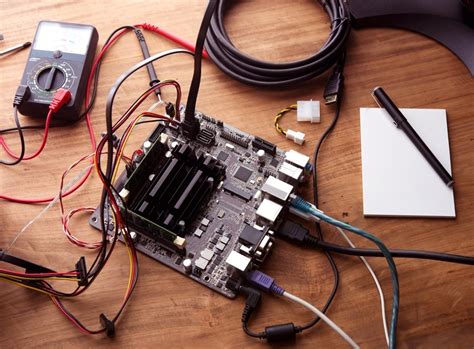
Case Studies: Successful Applications of New Techniques
In the rapidly evolving realm of prototype electronics assembly, numerous case studies stand out as exemplars of how advanced techniques and materials have revolutionized the industry. One notable instance is a company that enhanced its pcb assembly process by integrating automated pick-and-place machines alongside sophisticated optical inspection systems. This combination drastically reduced manufacturing errors and increased throughput, enabling them to meet tight project deadlines without compromising on quality. Another compelling example can be seen in the use of novel materials in pcba fabrication. A team utilized flexible PCBs, which not only improved product durability but also allowed for greater design freedom, leading to innovative applications in wearable technology. Moreover, a startup specializing in IoT devices adopted 3D printing for rapid prototyping of custom housings, which streamlined their design process and minimized costs associated with traditional tooling methods. These case studies underscore the importance of leveraging emerging techniques and materials, showcasing how they can significantly enhance precision and efficiency in developing electronic prototypes for various applications.
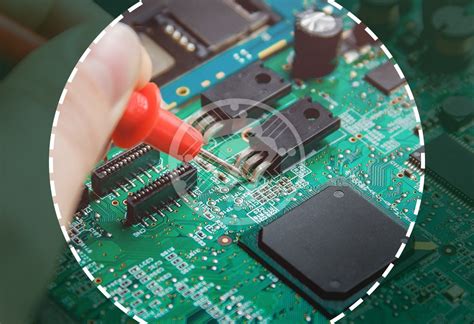
Future Trends in Prototype Electronics Assembly
As technology continues to evolve, the future trends in prototype electronics assembly are poised to significantly reshape the industry. One of the most prominent trends is the increasing integration of automation in the PCB assembly process. With advancements in robotics and artificial intelligence, the capacity for automated systems to handle complex assembly tasks is becoming more feasible, leading to enhanced efficiency and reduction of human error. Furthermore, we are witnessing a shift towards flexible manufacturing techniques that allow for rapid adjustments in production lines, enabling companies to quickly adapt to changing market demands. The adoption of cloud-based platforms also promises improved collaboration among design teams, allowing for real-time updates and streamlined communication during the PCBA process. Another key trend is the incorporation of advanced materials, which not only improve the durability of electronic prototypes but also enhance their performance capabilities. These materials often come with better thermal management properties and lighter weights, pushing the boundaries of what is possible in prototype development. As we look ahead, sustainability will also play a critical role; eco-friendly materials and energy-efficient processes are likely to become mainstream considerations for businesses seeking to minimize their carbon footprint while remaining competitive. Ultimately, these trends signify a promising future where innovations in prototype electronics assembly not only meet current demands but are prepared for upcoming challenges within various applications across industries.
Conclusion
In the ever-evolving field of prototype electronics assembly, the integration of innovative techniques is paramount. As highlighted throughout this article, advancements in pcb assembly processes, along with the careful selection of materials, have significantly improved overall performance. The application of modern tools in pcba not only enhances efficiency but also promotes accuracy in the development of electronic prototypes. Furthermore, the case studies discussed illustrate the tangible benefits these innovations have brought to various industries. As we look to the future, embracing these cutting-edge methods will be indispensable for organizations aiming to stay competitive and responsive to market demands. The commitment to refining every facet of the prototype electronics assembly process ultimately paves the way for greater success and reliability in product outcomes.
FAQs
What is PCB assembly and why is it important in prototype development?
PCB assembly (often referred to as PCBA) is the process of assembling electronic components onto printed circuit boards (PCBs). This step is crucial in prototype development, as it ensures that all components are correctly integrated, allowing for efficient testing and validation of electronic prototypes.
What are the advanced techniques used in PCB assembly for prototypes?
Advanced techniques in PCB assembly include surface mount technology (SMT), which allows for smaller components and higher density layouts. Additionally, automated assembly processes significantly improve speed and accuracy compared to manual methods.
What materials enhance performance during prototype electronics assembly?
Innovative materials such as high-frequency substrates and lead-free solder alternatives are becoming popular in PCBA. These materials provide improved heat dissipation and durability, which are vital for the performance of prototypes under various conditions.
Which tools are essential for efficient PCB assembly?
Key tools for efficient PCB assembly include soldering stations, stencil printers for paste application, and pick-and-place machines that automate component placement. Using these tools streamlines the process and enhances overall precision.
How does improving precision impact the prototype development process?
Improved precision directly affects the reliability of prototypes. When utilizing high-precision techniques during PCBA, potential issues can be detected early in the development phase, reducing rework and saving time and resources.
For additional information on how to enhance your PCBA processes or to explore innovative techniques further, please visit our site: please click here.

